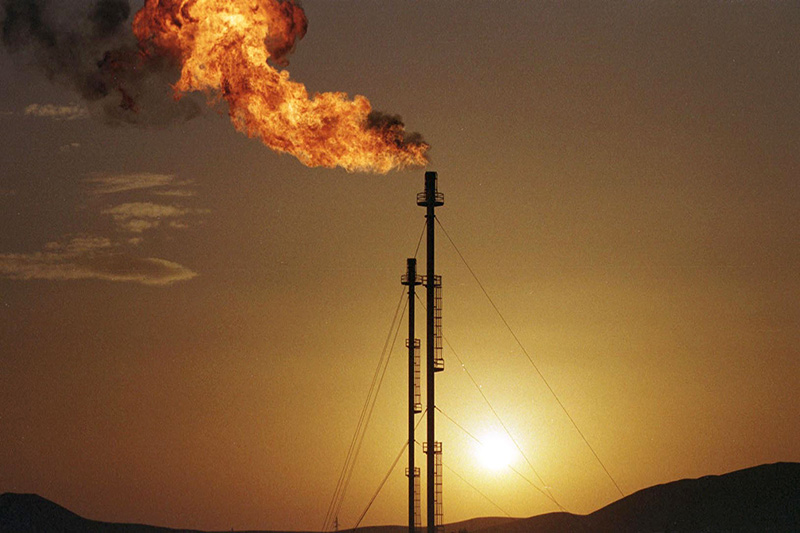Investing.com - Natural gas futures ended Friday’s session higher for the first time in four days, as investors returned to the market to seek cheap valuations after prices plunged below the key USD4.00-level on Thursday following the release of a bearish U.S. supply report.
On the New York Mercantile Exchange, natural gas futures for delivery in June rose 0.6% on Friday to settle the week at USD4.050 per million British thermal units.
Despite Friday’s upbeat performance, the June contract lost 4.65%, the second consecutive weekly decline.
Nymex gas futures tumbled 7% on Thursday after the U.S. Energy Information Administration said that natural gas storage rose by 43 billion cubic feet last week, above expectations for an increase of 28 billion cubic feet.
Inventories rose by 31 billion cubic feet in the same week a year earlier, while the five-year average change for the week is a rise of 67 billion cubic feet.
Total U.S. natural gas storage stood at 1.777 trillion cubic feet as of last week, 6% below the five-year average for this time of year.
Early injection estimates for this week’s storage data range from 58 billion cubic feet to 91 billion cubic feet.
Inventories rose by 30 billion cubic feet in the same week a year earlier, while the five-year average change for the week is a rise of 69 billion cubic feet.
Typically this time of year, stockpiles begin to climb as milder spring temperatures curb demand for natural gas.
Nymex gas prices have risen sharply in recent weeks, gaining almost 35% since mid-February, boosted by calls for colder temperatures in major consuming regions across the U.S. that helped tighten the market.
Gas futures rose to USD USD4.442 per million British thermal units on Wednesday, the strongest level since July 22, 2011.
Still, some analysts have warned that further gains may be limited with spring's low-demand shoulder season looming.
Market participants continued to monitor shifting weather forecasts for the next couple of weeks in an attempt to gauge near term demand prospects.
The Commodity Weather Group said it sees below-normal temperatures across the Midwest over the next one to five days, then they are expected to return to normal.
The heating season from November through March is the peak demand period for U.S. gas consumption. Nearly 50% of all U.S. households use gas for heating.
Gas use usually hits a seasonal low with spring's mild temperatures, before warmer weather increases demand for gas-fired electricity generation to power air conditioning.
Elsewhere in the energy complex, light sweet crude oil futures for June delivery settled at USD95.48 a barrel by close of trade on Friday, rising 2.7% on the week.
Meanwhile, heating oil for June delivery advanced 0.45% over the week to settle at USD2.879 per gallon by close of trade Friday.
On the New York Mercantile Exchange, natural gas futures for delivery in June rose 0.6% on Friday to settle the week at USD4.050 per million British thermal units.
Despite Friday’s upbeat performance, the June contract lost 4.65%, the second consecutive weekly decline.
Nymex gas futures tumbled 7% on Thursday after the U.S. Energy Information Administration said that natural gas storage rose by 43 billion cubic feet last week, above expectations for an increase of 28 billion cubic feet.
Inventories rose by 31 billion cubic feet in the same week a year earlier, while the five-year average change for the week is a rise of 67 billion cubic feet.
Total U.S. natural gas storage stood at 1.777 trillion cubic feet as of last week, 6% below the five-year average for this time of year.
Early injection estimates for this week’s storage data range from 58 billion cubic feet to 91 billion cubic feet.
Inventories rose by 30 billion cubic feet in the same week a year earlier, while the five-year average change for the week is a rise of 69 billion cubic feet.
Typically this time of year, stockpiles begin to climb as milder spring temperatures curb demand for natural gas.
Nymex gas prices have risen sharply in recent weeks, gaining almost 35% since mid-February, boosted by calls for colder temperatures in major consuming regions across the U.S. that helped tighten the market.
Gas futures rose to USD USD4.442 per million British thermal units on Wednesday, the strongest level since July 22, 2011.
Still, some analysts have warned that further gains may be limited with spring's low-demand shoulder season looming.
Market participants continued to monitor shifting weather forecasts for the next couple of weeks in an attempt to gauge near term demand prospects.
The Commodity Weather Group said it sees below-normal temperatures across the Midwest over the next one to five days, then they are expected to return to normal.
The heating season from November through March is the peak demand period for U.S. gas consumption. Nearly 50% of all U.S. households use gas for heating.
Gas use usually hits a seasonal low with spring's mild temperatures, before warmer weather increases demand for gas-fired electricity generation to power air conditioning.
Elsewhere in the energy complex, light sweet crude oil futures for June delivery settled at USD95.48 a barrel by close of trade on Friday, rising 2.7% on the week.
Meanwhile, heating oil for June delivery advanced 0.45% over the week to settle at USD2.879 per gallon by close of trade Friday.
